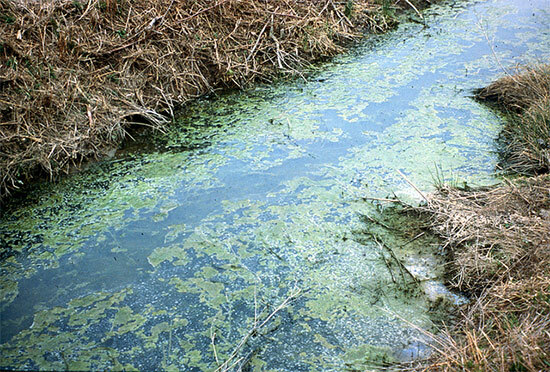Scientists predict above-average dead zone for Chesapeake Bay
Spring nutrient loads from the Potomac and Susquehanna rivers will impact summer water quality.
Scientists expect the Chesapeake Bay to see an above-average dead zone this summer, due to the excess nitrogen that flowed into the Bay from the Potomac and Susquehanna rivers this spring.

Dead zones, or areas of little to no dissolved oxygen, form when nutrient-fueled algae blooms die and decompose. The latest dead zone forecast predicts an early-summer oxygen-free zone of 0.51 cubic miles, a mid-summer low-oxygen zone of 1.97 cubic miles and a late-summer oxygen-free zone of 0.32 cubic miles. This forecast was funded by the National Oceanic and Atmospheric Administration (NOAA) and is based on models developed at the University of Maryland Center for Environmental Science (UMCES) and the University of Michigan.
Dead zone size depends on nutrient pollution and weather patterns. According to the U.S. Geological Survey (USGS), 44,000 metric tons of nitrogen entered the Bay in the spring of 2014. This is 20 percent higher than last spring’s nitrogen loadings, and will influence algae growth and dead zone formation this summer.
Researchers with the Maryland Department of Natural Resources (DNR) and the Virginia Department of Environmental Quality (DEQ) will measure oxygen levels in the Bay over the next few months. While a final dead zone measurement is not expected until October, DNR biologists measured a larger-than-average low-oxygen zone on their June monitoring cruise, confirming the dead zone forecast.

Comments
Will we ever get this nonpointsource pollution under control??? So discouraging!
Thank you!
Your comment has been received. Before it can be published, the comment will be reviewed by our team to ensure it adheres with our rules of engagement.
Back to recent stories